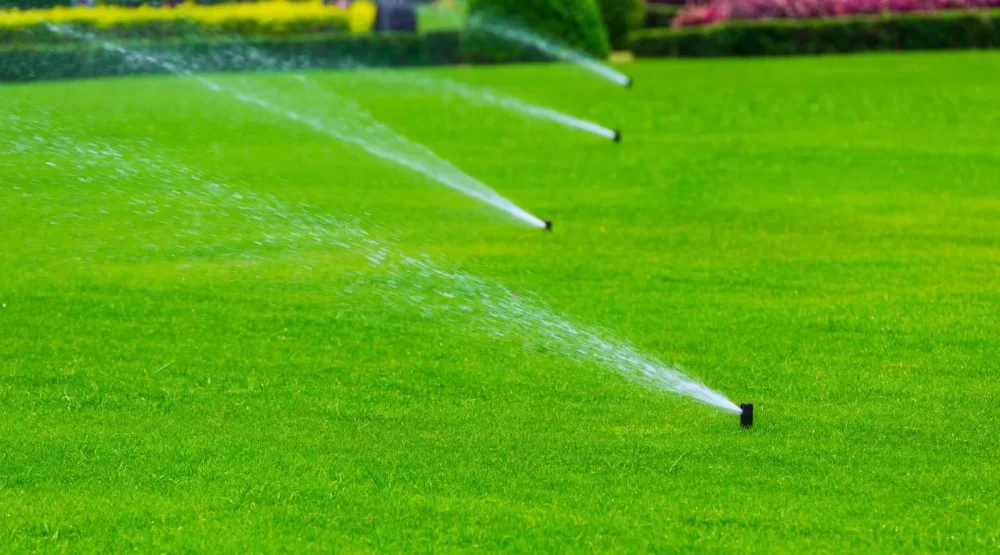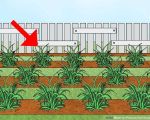
How to Keep Your Lawn Lush and Green During the Hot Summer Months
As the summer heat sets in, keeping your lawn looking vibrant and healthy can be a challenge. I know, because I’ve been there. Last summer, I noticed my lawn starting to show signs of stress—patchy spots, dry grass, and an overall dull appearance. I couldn’t bear to watch it wither away, so I decided to take action. In this article, I’ll share everything I’ve learned about how to maintain a lush, green lawn during the sweltering heat of summer.
1. Watering: The Key to a Healthy Lawn
Watering is one of the most crucial factors in keeping your lawn lush during the summer. However, many people make the mistake of over-watering or under-watering their grass, which can harm it in the long run.
My first lesson came from an old neighbor of mine, who had the most gorgeous yard I’d ever seen. When I asked him for advice, he told me that early morning watering was the secret. Watering your lawn early—before the sun gets too intense—helps the water soak into the soil before it evaporates. This method ensures your grass gets the moisture it needs without wasting any.
For the best results, aim to water your lawn deeply, but less frequently. It’s better to water your grass 2-3 times a week with deep watering (around 1 to 1.5 inches per session) rather than giving it a quick sprinkle every day. This promotes deeper root growth, which helps your lawn withstand the heat better.
2. Mowing Techniques: Keep Your Lawn Healthy, Not Overcut
Proper mowing is another important factor in keeping your lawn lush during the summer. I used to cut my grass too short, thinking it would look cleaner, but I quickly learned that it stressed out the grass. Cutting your grass too short can expose the roots to the hot sun, which can lead to drying out and even death of the grass.
Now, I make sure to set my mower height to about 3 inches, which helps shade the roots, keeps the soil cooler, and prevents weeds from taking over. Mowing too low can also lead to scalping, which weakens the grass. I’ve found that the taller my grass, the greener and healthier it looks throughout the hot months.
Additionally, make sure to mow your lawn when the grass is dry. Mowing wet grass can lead to clumps that smother the soil and promote fungal diseases, which can further harm your lawn during hot weather.
3. Fertilizing: Give Your Lawn a Nutrient Boost
Fertilizing your lawn is a great way to give it the nutrients it needs to thrive, especially in summer when heat and drought stress can deplete the soil. A balanced fertilizer that’s high in nitrogen will promote healthy growth and keep the grass looking vibrant. However, I learned the hard way that over-fertilizing can burn the grass and cause more harm than good.
Last summer, I used a slow-release fertilizer, which I applied early in the season. This slow-release method gradually feeds the lawn, which means that I didn’t have to worry about the fertilizer burning the grass. It’s also important to avoid fertilizing during the hottest part of the summer, as the grass is under stress and might not be able to absorb the nutrients efficiently.
Another trick I use now is applying a natural, organic fertilizer. I’ve noticed it doesn’t cause any burn, and it’s gentle on the environment as well.
4. Dealing with Lawn Diseases and Pests
Summer heat isn’t just tough on grass—it’s also a prime time for pests and lawn diseases. While keeping your lawn healthy and stress-free can help prevent pests, sometimes issues crop up no matter how much care you take.
I had a situation last year where my lawn started to show signs of grubs. The patches were becoming bare, and the grass felt spongy when I walked on it. I acted fast by using a natural grub control product, which worked wonders. You can also apply insecticidal soap to deal with other pests, but I recommend opting for natural options that won’t harm beneficial insects like bees.
If you notice patches of discolored grass, it’s important to identify the problem early. Fungal infections, like brown patch or dollar spot, thrive in hot, humid conditions. If you suspect a fungal problem, reduce watering in the affected areas, as moist conditions can make it worse. A fungicide treatment can help control the spread, but always follow the instructions to avoid overuse.
5. Aerating Your Lawn to Promote Healthy Growth
Aeration is a technique that involves perforating the soil to allow air, water, and nutrients to reach the roots more easily. After a hot summer, the soil can become compacted, especially if you have heavy foot traffic or clay soil.
Last year, I noticed that my lawn wasn’t draining water properly, and the grass started to look stressed even after I’d watered it. That’s when I decided to aerate my lawn. I used a core aerator, which removes small plugs of soil from the ground, allowing the roots to breathe. The difference was night and day! Aeration helped my lawn absorb water more effectively and strengthened the roots, making it more resilient to heat stress.
6. Grass Variety: Choosing the Right Grass for Summer
Not all grasses are created equal, especially when it comes to surviving hot weather. Some varieties are more heat-tolerant and drought-resistant, making them a better choice for hot climates. In my experience, cool-season grasses like Kentucky bluegrass struggle during the summer months, while warm-season grasses like Bermuda or Zoysia thrive in the heat.
Last year, I decided to switch to a warm-season grass variety for my lawn, and I’ve been amazed at how well it holds up in the heat. If you’re planning a lawn renovation, consider consulting with a local landscaping professional to choose the best grass for your climate and needs.
7. Lawn Recovery: What to Do After the Heat Wave
Even with all the care you provide, your lawn might still show signs of stress during particularly brutal heat waves. When this happens, don’t panic. My lawn looked a bit rough last summer, but I followed a recovery plan to bring it back to life.
The first step is to give your lawn a break. If you’re still watering regularly, cut back and allow the grass to dry out a little. This might seem counterintuitive, but it helps the grass conserve energy. Then, focus on reseeding any bare patches and ensuring that the grass has the nutrients it needs to regrow.
It’s also important to adjust your mowing habits during recovery. Instead of mowing every week, reduce it to every 10 days or so, giving your lawn time to recover between cuts.
By following these steps, my lawn made a full recovery and emerged looking even better than before. I now know that keeping a lawn lush during summer is all about the right balance of care—watering, mowing, fertilizing, and protecting it from the heat. It’s not a quick fix, but with the right steps, you can enjoy a beautiful lawn all year long.








